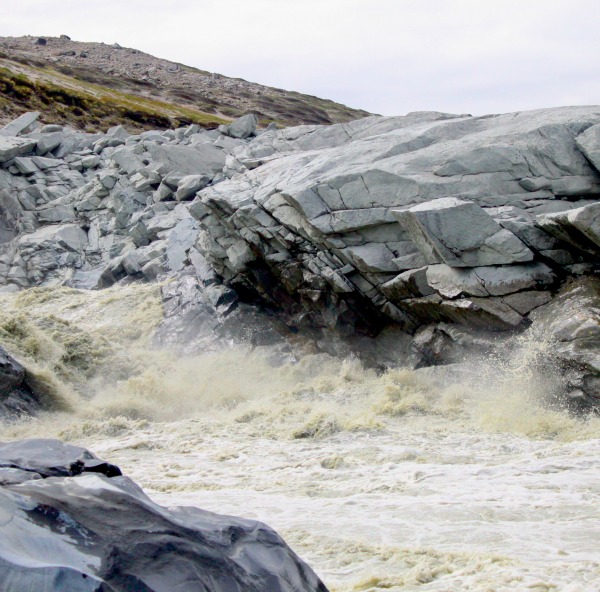
In addition to adding huge amounts of water to the oceans, Greenland’s melting ice sheet could also be unleashing 400,000 metric tons of phosphorus every year – as much as the mighty Mississippi River releases into the Gulf of Mexico, according to a new study, reported by the AGU on February 4, 2016.
Phosphorus is an essential nutrient that feeds plankton at the base of the ocean food web. Glacial meltwater has long been known to contain phosphorus, but new research suggests that as the melting Greenland ice sheet is releasing far more of the key nutrient than previously thought.
It is not clear yet how much of the phosphorus being released from the ice sheet is reaching the open ocean, but if a large amount of phosphorus coming off the glacier makes it to the sea, the nutrient could rev up biological activity of Arctic waters, according to the study’s authors. The nutrient could stimulate growth of plankton at the base of the ocean food web that could impact birds, fish and marine mammals higher up the food chain. The research also suggests ice sheet-derived phosphorus could eventually reach the northern Pacific and Atlantic oceans, which are connected to the Arctic Ocean.

Jon Hawkings, of the Bristol Glaciology Centre at the University of Bristol in the United Kingdom is a co-author of the study, which has been accepted for publication in the journal Global Biogeochemical Cycles. Hawkings said:
We find annual phosphorus input (for all of Greenland’s outlet glaciers) are at least equal to some of the world’s largest rivers, such as the Mississippi and the Amazon.
As climate change warms Greenland and more ice melts and makes its way into the sea, the ice sheet is potentially becoming a more important source of nutrients, Hawkings said.
The researchers spent three months in 2012 and 2013 gathering water samples and measuring the flow of water from the 600-square-kilometer (230-square-mile) Leverett Glacier and the smaller, 36-square-kilometer (14-square-mile) Kiattuut Sermiat Glacier in Greenland to understand how much phosphorus, in various forms, was escaping from the ice sheet over time and draining into the sea. They then used that data to extrapolate how much phosphorus was likely being released from the entire Greenland ice sheet.
They found greater amounts of phosphorus in the waters of the Leverett Glacier than had been detected at previous study sites, which have looked mostly at smaller glaciers. The large Leverett Glacier, however, is more representative of the glaciers that contribute the bulk of meltwater coming from the Greenland ice sheet, said Hawkings.
The concentrations of dissolved phosphate the researchers found in the Leverett Glacier meltwater – which is just one form of phosphorus found in the meltwater – were similar to concentrations found in Arctic rivers, and among the highest levels recorded in glacial meltwaters worldwide. The total phosphorus concentrations found in the meltwater of the Leverett Glacier – which includes phosphorus-rich particles – was 10 times greater than concentrations found in Arctic river waters.
If the majority of the phosphorus found in meltwater from all of Greenland’s glaciers reaches the sea, it would be equal to about 400,000 metric tons (440,000 U.S. tons) per year of phosphorus, more than Arctic rivers are estimated to contribute to the Arctic Ocean, according to the new study. However, how much phosphorus makes it from the meltwater into the open oceans is not yet known. The largest portion of phosphorus, which is in the form of powdered rock minerals, could be settling out of the meltwater and end up buried in Greenland’s fjords before it has time to dissolve, Hawkings said.
Enjoying EarthSky? Sign up for our free daily newsletter today!
Bottom line: Greenland’s melting ice sheet could also be unleashing 400,000 metric tons of phosphorus every year – as much as the mighty Mississippi River releases into the Gulf of Mexico, according to a new study, accepted for publication in the journal Global Biogeochemical Cycles.











